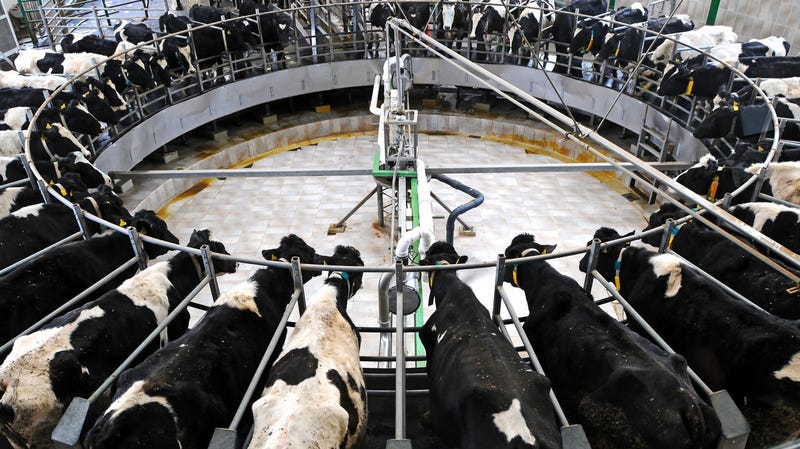 Another day, another story about the sad state of the dairy industry. Milk consumption has plummeted 40% since 1975. In the past three months, the nation’s two biggest milk processors, Dean Foods (est. 1925) and Borden Dairy (est. 1856) have declared bankruptcy. The public has grown concerned about the connection between cows and climate change, alternative nut juices are stealing market share, and when it comes to PR, milk’s public image becomes lamer by the day. As the dairy industry grapples with an uncertain future, many of those affected are beginning to develop solutions of their own. For some small dairy farmers, this means eschewing the advice of the FDA and (literally) betting the farm on the controversial—and, in some places, illegal—niche industry of raw milk.
Another day, another story about the sad state of the dairy industry. Milk consumption has plummeted 40% since 1975. In the past three months, the nation’s two biggest milk processors, Dean Foods (est. 1925) and Borden Dairy (est. 1856) have declared bankruptcy. The public has grown concerned about the connection between cows and climate change, alternative nut juices are stealing market share, and when it comes to PR, milk’s public image becomes lamer by the day. As the dairy industry grapples with an uncertain future, many of those affected are beginning to develop solutions of their own. For some small dairy farmers, this means eschewing the advice of the FDA and (literally) betting the farm on the controversial—and, in some places, illegal—niche industry of raw milk.
Raw milk is unpasteurized, making it susceptible to bacteria that can cause things like typhoid, tuberculosis, diphtheria, and cholera. One of the reasons people don’t die from those things as often as they did back in the 19th century is because the dairy industry began using commercial milk pasteurizers upon their invention in 1882. But now, according to KSTU, a Salt Lake City Fox affiliate, there’s a growing movement of those switching to raw milk for its supposed health benefits. Farmers like Debra Kremer-Smith, fifth-generation owner of S&D Smith Dairy in Ohio, is hoping that appealing to this niche market with a product called “safe raw milk” could save the century-old family farm.
“We do pasteurization for about one fourth of our milk and then three-fourths is all raw,” said Kremer-Smith. “Our heart lies in raw milk because it’s just easier [and] there’s less processing steps. It’s better, it’s healthier, it tastes great.”
Though the FDA discourages drinking raw milk, Kremer-Smith doesn’t believe it’s dangerous. “Pasteurization is using heat to kill bacteria that’s in the milk. And so that is a good. But, the bad thing about it is it kills all the good things that are in milk,” she said.
While the federal government believes that raw milk is dangerous and a public threat—their website mentions that “raw milk puts all consumers at risk, the elderly, immune-compromised people, children and pregnant women are especially vulnerable to the hazards of raw milk consumption”—it’s not actually illegal on a federal level. A law was passed in 1987 prohibiting the sale of raw milk across state lines, but outside of that, the legality of raw milk is left up to the states. Though they might have to jump through hoops and wrangle their way through loopholes, Kremer-Smith and other small farmers plan to stay the course with their raw milk plans, not only to appease a growing market within a shrinking industry, but also because raw milk can be sold for three to four times the cost of the pasteurized kind. I suppose this is yet another conundrum for our complicated times: to save our farms, are we willing to contract dysentery?
Source: thetakeout.com









